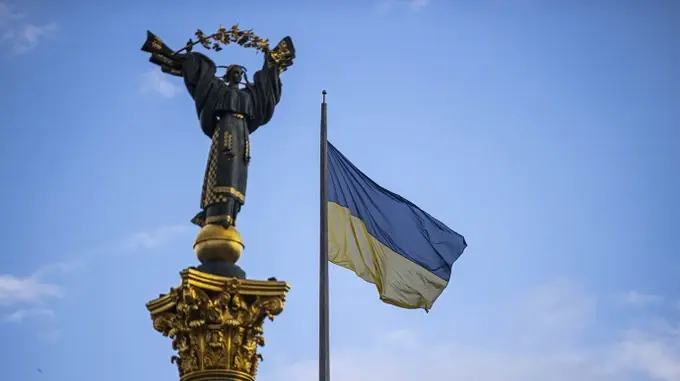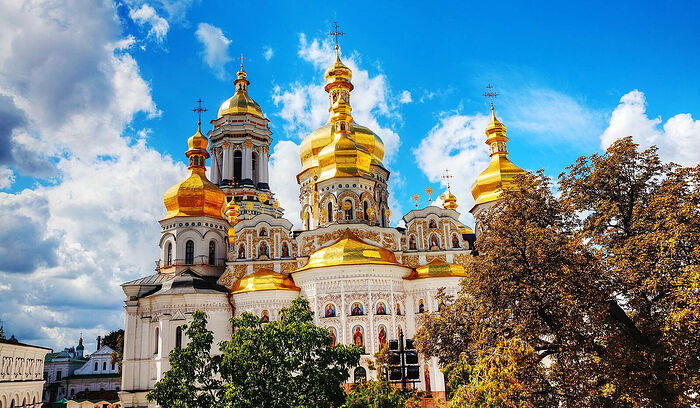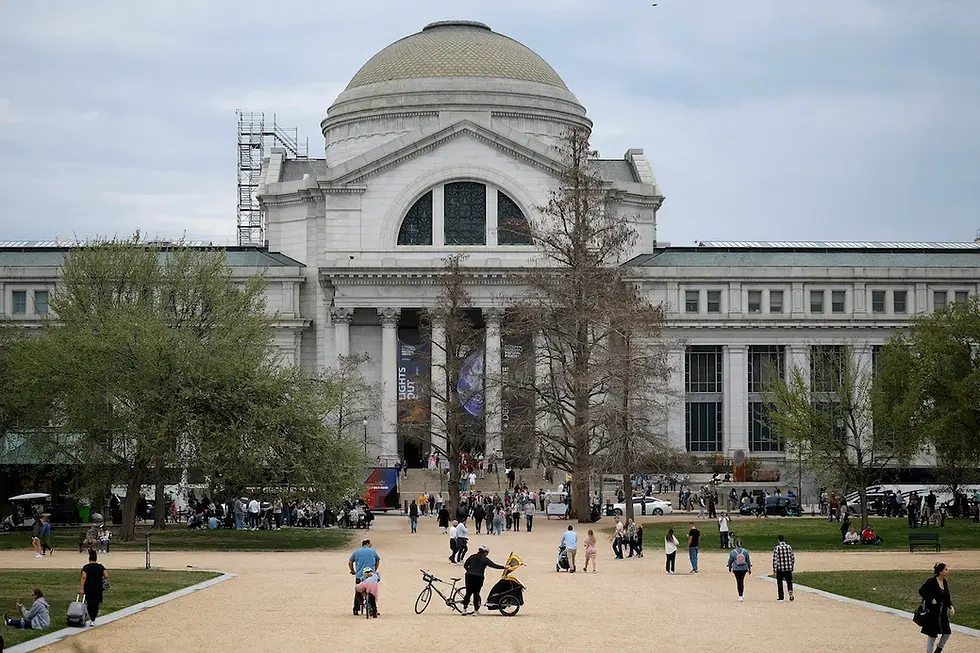How to maintain and preserve Ukrainian culture at a time of uncertainty.
- Chloe Heuchert
- 4 hours ago
- 6 min read

Culture is one of the most important foundations of a nation’s identity, shaping how people see themselves and how they are understood by others. Over centuries, Ukrainians have faced challenges such as foreign domination, political struggles, and efforts to erase their traditions. Despite these difficulties, the resilience of the Ukrainian people has kept their culture alive. Today, amid ongoing conflict, the preservation of Ukrainian culture requires conscious effort. While the war rages on without an ending in sight, salvaging Ukrainian culture is important now more than ever. Before we look at why maintaining the survival of Ukrainian culture is pivotal, we must look at the opposing side and a brief history of the land.
While the invasion by the Russians in Ukraine has been ongoing, Putin's own narrative needs to be briefly discussed. He firmly believes that Ukrainians and Russians are 'one people.' An individual who has helped Putin immensely with his stance on Ukraine is Vladislav Surkov. Surkov had been in the Kremlin for over twenty years and has also been called the ‘grey cardinal.’ He is known as the puppeteer behind the Ukraine ideology Putin holds so dear. Surkov was also later let go from his position as advisor to Putin for unknown reasons. When he was fired from his position, he started spewing anti-Ukrainian rhetoric just days after the fact. Surkov was interviewed on February 26 of that year and simply stated: 'but there is no nation. There is only a brochure, ‘The Self-Styled Ukraine’, but there is no Ukraine.’
This utter hatred against Ukraine is nothing new but has been going on for years within the Russian government. Putin even claimed with his famous quote in 2014 that Ukrainians and Russians are 'one people.' He claimed that Kyiv is the mother of Russian cities and that ancient Rus is a connector. He also reinstated this claim back in 2020 while saying Ukrainian identity was created due to foreign interference. With comments like these being made by individuals in power, understanding and looking back at history are more important than ever. Before we look at why and how preserving Ukrainian culture is important, we firstly need to look at a brief history of how Ukraine began.
The Ukraine began as one of the first Slavic states, Kyvian Rus. During the 10th and 11th centuries, it grew ties with countries including France and others through monarchal marriages. When things began to crumble due to foreign attack, the remains of Rus were put together with the kingdom of Poland and Lithuania; later the Poland-Lithuanian commonwealth.
During the 17th century, the Khmelnytsky Uprising commenced when the Cossack Het’mantate went against the Polish-Lithuanian commonwealth. The rebellion led to the creation of a Cossack Het'manate in Ukraine. Now this is the portion of history where Russians claim that they own Ukraine. During 1654, the Pereiaslav Agreement was had between Tsar Alexei I and Bohdan Khmelnysrkyi. The agreement itself gave military protection to the Cossack Het'manate in return for an allegiance to be made to the tsar. The Russians believe that this agreement reunified Ukraine with them. However, here is the historical kicker. Neither side comprehended what they were agreeing to. The tsar simply assumed that he was gaining citizens whereas Khmelnytskyi he was only agreeing to protection. Language was the main barrier between these two individuals; both needed interpreters to understand. While there was pressure from the Russian side later on, the Het’manate kept complete autonomy for over a century. The Het’manate were eventually abolished after the defeat of Ivan Mazepa in the Battle of Poltava in 1709 by the Russians. Some of the land that Ukraine is now made up of today went under the control of the Russians while the remaining portions were known to be a part of the Austro-Hungarian Empire. During 1917, Ukraine had a brief time where they were independent, even forming the Ukrainian People’s Republic. The republic would have fallen in 1918 due to the Bolsheviks who replaced it with a Ukrainian conservative monarchist government. Years later, disastrous times would have occurred when Stalin created the Holodomor (famine) between 1932-1933 killing around 5 million people. During World War II, many Ukrainians would have fled Europe for America and Canada to escape persecution. For many years the Society Union would have controlled the country. In 1991, they once again became an independent nation. Ukraine is also the first country to give up its nuclear weapons in replacement of security guarantees by signing the Budapest Memorandum. While Ukraine was an independent country once more, Viktor Yanukovych would have commenced a domino affect with his Russian leaning government years later.
As it can be easily seen from that brief historical synopsis, Ukraine was its own nation since the very beginning.
With Putin’s tyrannical plan to destroy Ukrainian identity, it is imperative that people preserve what it means to be Ukrainian. It can be seen throughout the war that the main aim is to eradicate Ukrainian identity. As of 2025, Russia has destroyed over 2,024 museums, historical sites, libraries, monuments, and theatres. By destroying these, the Kremlin is showing the world that they do not just want Ukrainian territories, but for their unique identity to be erased.
Well, to Putin and the Kremlins surprise, we have a little something called the internet now. Hundreds of years ago it was much easier to erase a person, place, or civilization from history. Now, you can do a quick Google search and find a plethora of resources at your fingertips. Nice try Putin, unless you decide to try to own the internet, Ukrainian identity will forever be there; whether you have destroyed historical buildings or not.
How can people preserve Ukrainian culture?
During the beginning of the invasion, Russian military either destroyed priceless artifiacts or took them for themselves. While it is hard to preserve physical objects or buildings from destruction, professionals and volunteers have been digitizing items and buildings. SUCHO is an example of this process and the countless amount of volunteers that have assisted in recording information. There are over 1,500 volunteers digitizing data around 50 TB of cultural institutes and have web-archived over 5,000 websites. The reasoning behind this is to ensure the websites do not go offline. Examples of these websites would be in regards to museums, national archives, and others. They have given digitization equipment to over 70 institutions and have a Ukrainian gallery that showcases images from their web archives. Another project that has done similar work is the Ukraine Digitization Project. DT heritage has done this work pro bono and have given a digitization system to the Kyiv Pechersk Lavra and have trained museum employees on how it works. The Lavra or Kyiv Monastery of the Caves is an Orthodox monastery that was created in 1051. It is now one of the largest museums of the country that has icons, paintings, prints, and more within its walls. During the Russian invasion, military conflicts where occurring outside of its gates; jeopardizing not only the building but the irreplaceable collections inside. In 2023, DT trained staff on how to use the equipment to ensure pieces were digitized in case they were destroyed, lost, or stolen. The work was successfully completed in January 2024 and DT is currently looking at other locations to assist. There are other initiatives going on preserving Ukrainian culture in museums and other buildings that could one day be physically lost.

One of the most important aspects of cultural preservation is the protection and promotion of the language. Language is more than a means of communication; it is the carrier of history, literature, and values. By speaking Ukrainian at home, using it in schools, and promoting it in media, Ukrainians strengthen their identity and pass it on to future generations to carry. Language policies and literature all contribute to ensuring that the language thrives not only in everyday life but also in academic and artistic contexts. Without a strong commitment to language preservation, many other cultural traditions risk being lost.
Equally important is the safeguarding of folk traditions and artistic expressions. Ukrainian music, dance, embroidery, crafts, and cuisine embody centuries of collective memory and experiences. These practices give people a sense of belonging while connecting modern generations to their cultural past. Encouraging people to participate in cultural festivals, workshops, and artistic projects help ensure these traditions remain relevant.
Education and cultural institutions also play a pivotal role in protecting Ukrainian culture. The integration of cultural education into schools assists younger generations understand the importance of their heritage.
The preservation of Ukrainian culture must extend beyond national borders. Sharing Ukrainian traditions through film, art, music, literature, and festivals allows the world to experience Ukraine’s uniqueness. This international visibility not only protects Ukrainian culture from being destroyed but ensures it contributes to the rich diversity of world heritage.
Preserving Ukrainian culture is both a responsibility and a right. It requires dedication to language, traditions, education, and international exchange. By practising the culture and sharing it with others, Ukrainians ensure that their identity remains and that tradition survives.

Comments